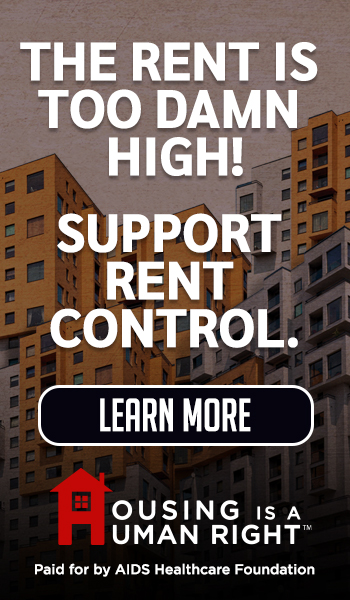Comments
iAUDIT! - As I mentioned in an earlier column, on August 5, the Westside Current published an interview with Union Rescue Mission CEO Mark Hood. During that interview, Mr. Hood used an excellent visual model to describe just how small a reduction has been made in LA’s population, if LAHSA’s latest PIT count is to be believed. He said, “If you had this big open field, and you put 75,000 people in that field, and you told everybody to close their eyes, and you changed it to 72,000, would anybody notice? Any improvement is a good improvement. But what I would say is that we as a community should expect more.” That is a superb analogy for LA’s homeless program performance.
I’d like to expand on Mr. Hood’s model a bit and add some context. The LA Coliseum holds about 77,000 people. Pretend you are standing at the top of the arch where the Olympic torch was lit. Looking down, you can see the stadium is nearly full. In keeping with Mr. Hood’s analogy, you turn around and close your eyes for a few minutes. When you look down again, 3,000 people have left. Would you notice? Now suppose:
· It costs between $2 billion and $4 billion to get those 3,000 people to leave.
· Somewhere between 1,000 and 2,000 will come back before any more leave.
· While the 3,000 were leaving, more new people came in through the gates.
That is homelessness in Los Angeles.
Where did I get those numbers? As I detailed in an earlier column, the City, County, and LAHSA spend anywhere between $2 billion and $4 billion per year on homelessness. The 2025 PIT count showed a decrease in homelessness of about 3,000 people. If you’re curious what that means in terms of cost per person, assuming all 3,000 people are unique, it comes out to between $666,670 and $1.33 million per person. Unfortunately, as we know from several reports and audits, many of those 3,000 people are actually repeat clients. A 2019 L.A. City Controller audit of LAHSA’s outreach programs showed that people who enter shelters, then leave and return after more than a month are counted twice. A December 2024 audit from the City Controller showed fewer than 20 percent of those in shelters were permanently housed, with nearly 50 percent falling back into homelessness, where they fed the cycle of multiple counts noted in the 2019 audit. Similarly, a 2025 assessment from the audit firm Alavarez and Marsal (A&M) ordered by federal judge David O. Carter revealed there are multiple chances to count the same person more than once as he or she moves through the shelter-housing system. If you’re disinclined to believe any of those reports, perhaps you should read the May 2024 study by the Homelessness Study Team of the Greater L.A. League of Women Voters that referred to the “churn” in the homelessness system, where people continually fall into and out of the streets/shelter/housing cycle.
We must also remember neither the City nor LAHSA truly count people; they count processes completed. As the 2019 City Controller audit showed, the same person could be counted multiple times as he or she enters, leaves, and returns to a shelter; the City may count each act of sheltering as a “person” but in reality, it is merely counting processes. As in years past, LAHSA’s 2025 PIT count presentation includes this caveat on its “all-time high permanent housing numbers”: “Data provided courtesy of County Information Office. It is possible for one person to have multiple permanent housing placements in a year”. (slide 10). The term “permanent housing” has no meaning if the definition includes placing one person multiple times in the same year.
While all this “churn” is taking place, more people are becoming homeless every day. A 2023 report by McKinsey & Company estimated that 227 people fall into homelessness in Los Angeles every day, while only 207 exit, for a net increase every day of 20, or about 7,300 per year. That number may not be reflected in official counts because many people lift themselves out of homelessness on their own, but it explains the persistent increase in homelessness over the past several years. Returning to the LA Coliseum, if you had been sitting atop the colonnade in 2016, you would have seen 44,870 people in the seats, or about 71 percent of the stadium’s capacity. In the nine years between 2016 and 2025, LA’s homeless population increased by 60 percent, and each year you would have seen more and more people in the seats. The McKinsey report’s data also supports those who say LAHSA seriously undercounts the unhoused population. A September 2024 research paper by the Economic Roundtable suggests there may be as many as 139,000 unhoused people in LA County.
Under the circumstances, Mr. Hood’s vision of a crowd of 75,000 was particularly relevant. Each year until 2024 there would have been sizable and easily noticeable increases in the number of people in the crowd. In 2024 and 2025, there might have been small indistinct decreases, although that is up for debate given accusations of data manipulation within LAHSA. Even if the decreases are real, the cost is both unwarranted and unsustainable. The last time I checked the City Controller’s website, it cost more than $430,000 per person to house someone through the Inside Safe program. A few years ago, the Controller called out the excessive construction costs for housing built using Measure HHH funding, costing as much as $800,000 or more for a one-bedroom apartment. That housing isn’t necessary for most homeless people; the McKinsey report shows that about 69 percent of those who exit homelessness self-resolve without government intervention. Pilot programs have demonstrated some unhoused people would benefit from simple short- or medium-term stipends to help pay living costs until they stabilize their financial situations. But L.A.’s homelessness system is not set up for simple or individualized solutions; it is built around the one-size-fits-all Housing First remedy, where everyone needs their own apartment above all else. The unnecessary cost and time spent creating thousands of housing units contributes to the fact LA has one of the highest rates of unsheltered homelessness in the country. A more flexible system could respond to low-needs people faster and focus resources on those with more acute problems.
Things may be changing despite advocates’ stubborn defense of the status quo. A recent HUD Notice of Funding Opportunity (NOFO) informed regional homelessness agencies they should be prepared to base their grant requests on programs that “focus on treatment and recovery, reducing unsheltered homelessness, reducing returns to homelessness, and increasing the earned income of participants”. This is a wholesale departure from the formulaic and process-bound Housing First model used for more than a decade. As you might imagine, the NOFO and the policies behind it have caused much consternation within LA’s advocacy community, with spokespeople from the City Council, Board of Supervisors, and non-profits condemning them as heartless and sure to increase homelessness, despite the fact their own solutions have only made the crisis worse.
Change isn’t just coming from the Trump administration. In May, Governor Newsom’s office released policy guidance and a model ordinance to enhance encampment clearances and facilitate moving people to shelters. As expected, the guidance was greeted with a shrug by city and county leaders who insist their policies are the only solution.
While local leaders pursue failed programs and try to implement theoretical solutions, more people crowd into the analogous Coliseum. Although some may leave and not return, far too many are in an endless cycle of coming and going. More tragically, at least 2,500 per year don’t come back because they die on LA’s streets. Unless something changes, we will see many more Coliseums full of suffering people for years to come.
(Tim Campbell is a longtime Westchester resident and veteran public servant who spent his career managing a municipal performance audit program. Drawing on decades of experience in government accountability, he brings a results-driven approach to civic oversight. In his iAUDIT! column for CityWatchLA, Campbell emphasizes outcomes over bureaucratic process, offering readers clear-eyed analyses of how local programs perform—and where they fall short. His work advocates for greater transparency, efficiency, and effectiveness in Los Angeles government.)

















